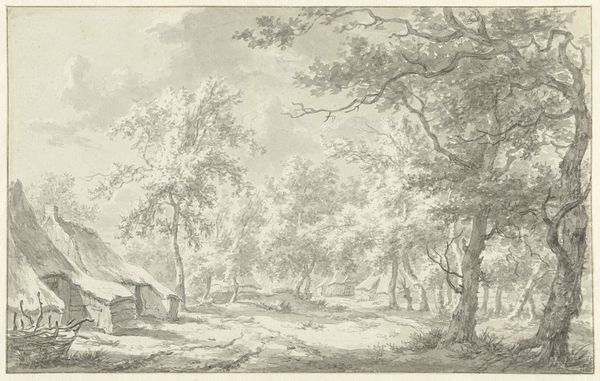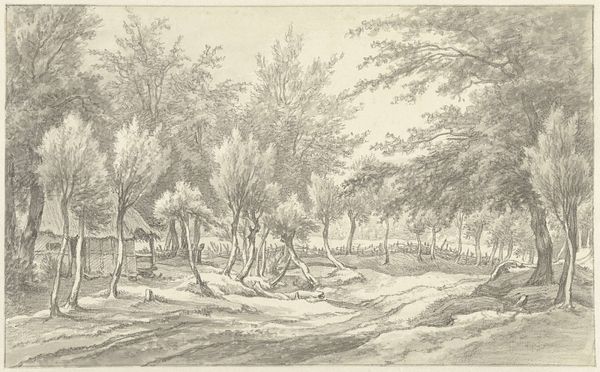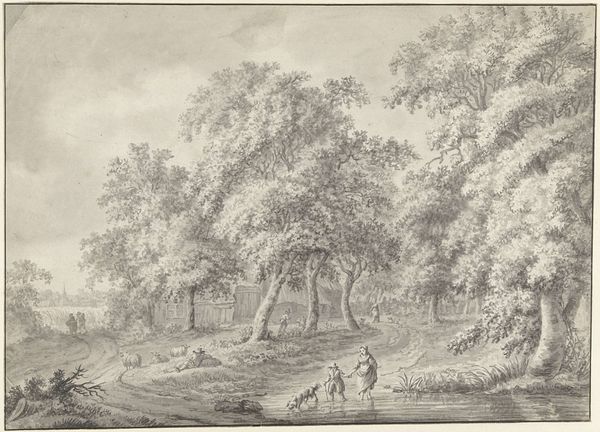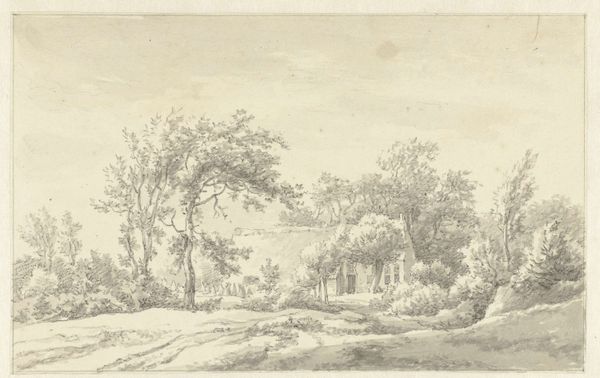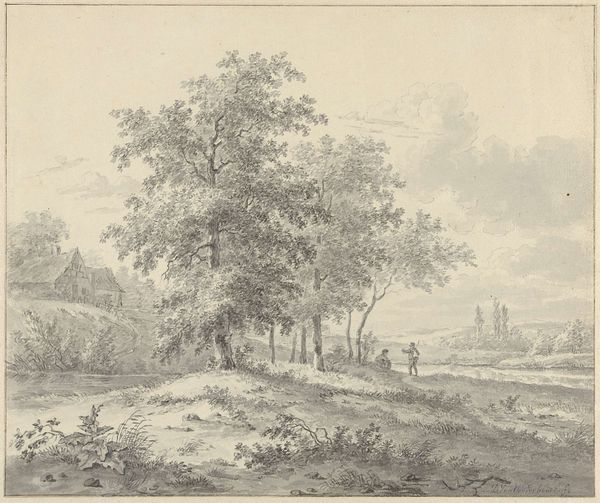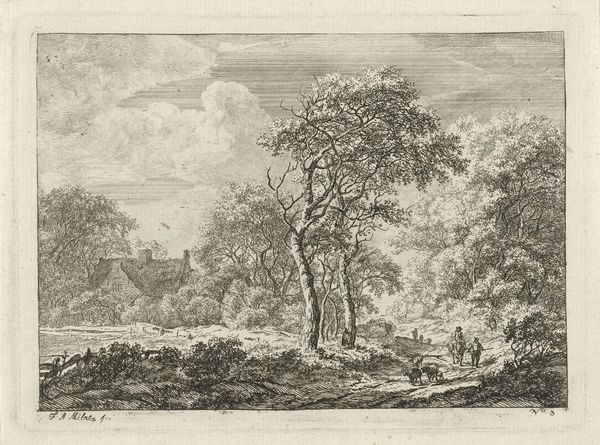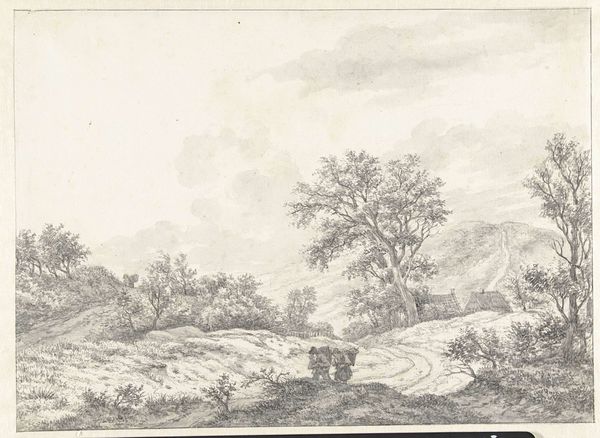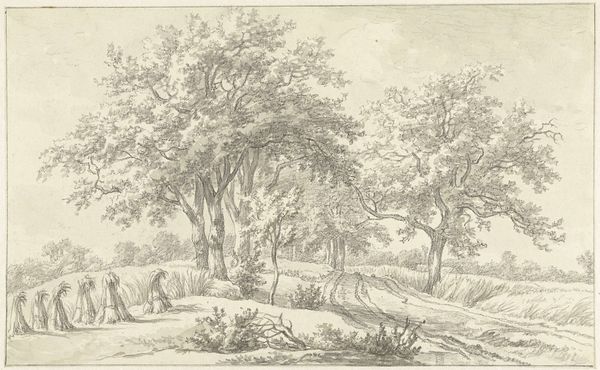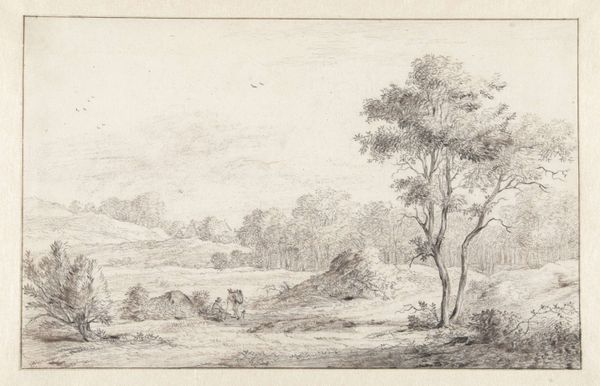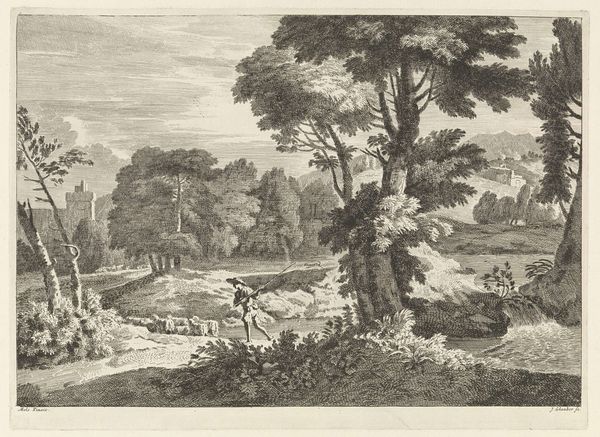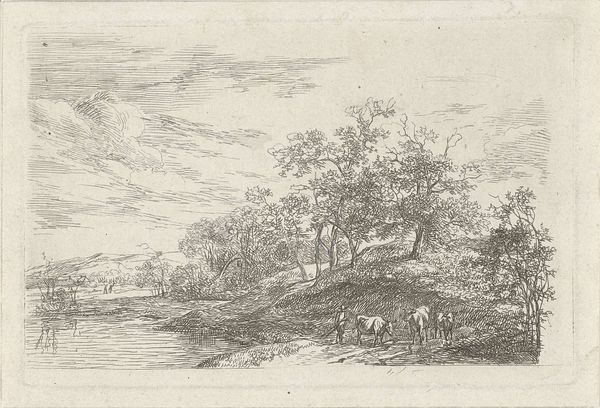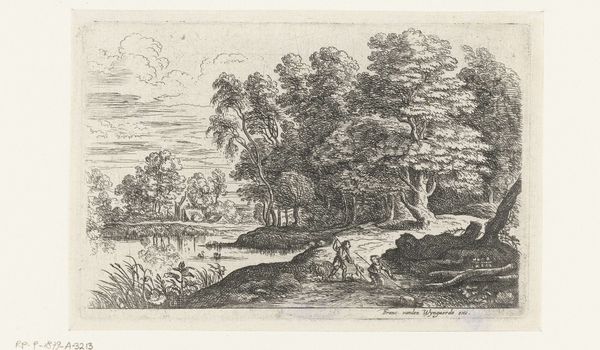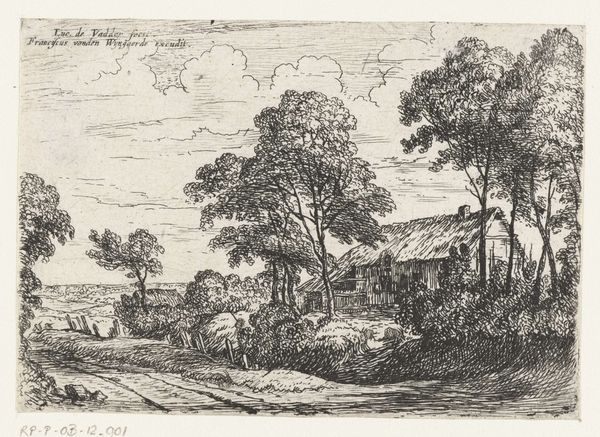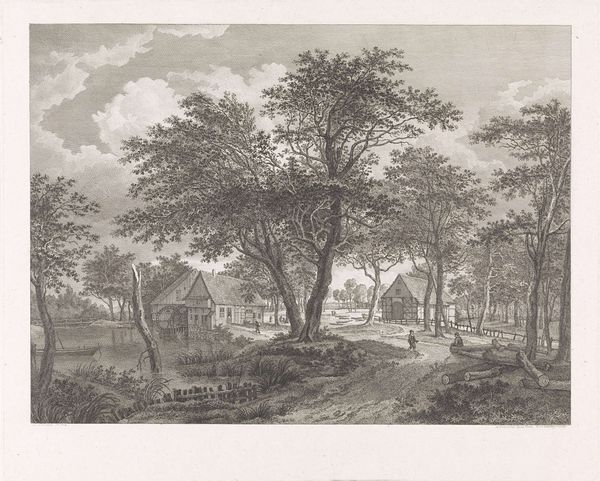
drawing, pencil
#
pencil drawn
#
drawing
#
dutch-golden-age
#
pen sketch
#
pencil sketch
#
landscape
#
form
#
pencil drawing
#
pencil
#
line
#
pencil work
#
realism
Dimensions: height 181 mm, width 259 mm
Copyright: Rijks Museum: Open Domain
Editor: This is "Landscape with Approaching Storm" by Dirck Dalens, made sometime between 1610 and 1676. It's a pencil drawing, and you can really feel the wind. What strikes me is the depiction of labor in what appears to be a quite hostile environment. What do you see in this piece? Curator: Well, immediately I'm drawn to the raw materiality of the pencil itself. It's a humble material, yet look at the effects Dalens achieves! Consider the social context. During the Dutch Golden Age, landscape painting wasn’t just about pretty scenery. It reflected a burgeoning sense of national identity, intertwined with the economic realities of the time. Editor: Economic realities? How so? Curator: The figures struggling against the storm, hauling the boat... It's labor made visible. Think about the materials they are transporting – probably essential goods for trade or survival. How does Dalens use the *line* itself to convey the *force* of the wind, not just the appearance? Is this depiction idealized, or does it offer a glimpse into the hardships faced by common people? Editor: It's fascinating how the drawing makes visible those normally unseen activities and how the materials themselves play into that! Is this "realism" more about an aesthetic, or a reflection of social structures and labour? Curator: It challenges that binary. Realism here is less a style, more an observation of lived experience shaped by material constraints. Editor: I hadn't considered how much the choice of medium influences our reading. It does connect more directly to the "hands-on" aspect of labour. Curator: Precisely! It collapses the distance between the act of art-making and the labor depicted. It’s not just what is represented, but *how* it’s represented that speaks volumes about the value of labour. Editor: That's really given me a lot to think about; the social dimension inherent in materials and methods that goes into creating an artwork and depicting an everyday landscape.
Comments
No comments
Be the first to comment and join the conversation on the ultimate creative platform.
